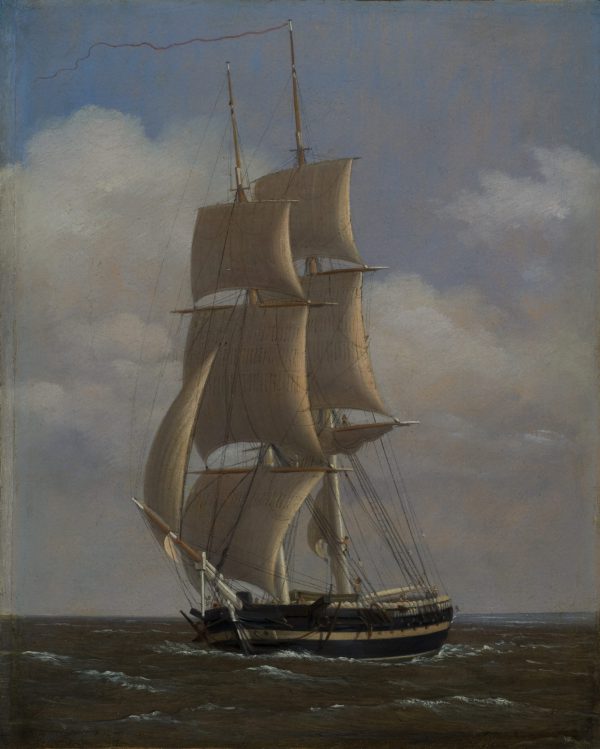Danish naval brick, ca. 1827.
Oil on paper laid down on canvas., H. 0.31 m; W. 0.25 m
Handwritten label on the reverse: N°110/ Eckersberg.
Provenance: Private collection, France.
Rightfully considered the “Father of Danish painting”, Eckersberg taught at the Royal Academy in Copenhagen for 35 years and brought about monumental developments in Danish art. He was active in many genres: history painting, portraiture (he completed over 150 portraits), and landscape, notably architectural painting and seascapes. From 1803 to 1810 he studied at the Academy, led at the time by N.A. Abildgaard, where he aspired to a career in history painting. After winning a gold medal, he left for Paris in 1810. He studied under Jacques-Louis David for one year, a period that proved decisive in his artistic development. During his stay in Rome from 1813 to 1816, he reached his artistic maturity, working on plein air pieces and completing a series of perspectives of the city from unusual points of view. Upon his return to Copenhagen, he became a professor at the Academy in 1818.
Eckersberg founded his art on the observation of nature and on the principles of classical composition. Live drawing, using both male and female models, was an integral part of his teaching. He also often brought his students to the areas surrounding Copenhagen to make them paint outdoors. Linear perspective became an essential component of his instruction. In his two treatises on the subject, published in 1833 and 1841, he defined the rules of the construction of space as well as the rendering of shadow.
In spite of the many commissions for history paintings and portraits he received, Eckersberg was able to dedicate more and more time to seascape painting, a genre he was passionate about from the 1820s until the end of his days.
The boat represented here by Eckersberg is known as a brig, characterized by its two masts, a mainmast and a foremast, and its square sails.


